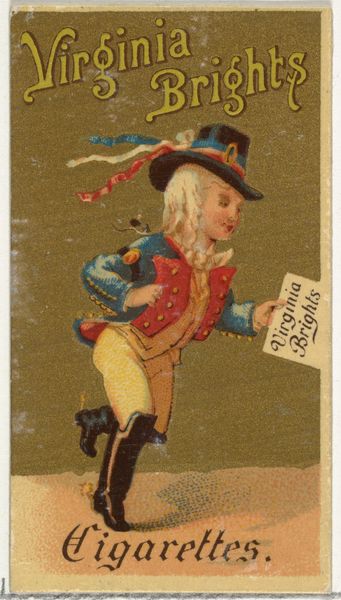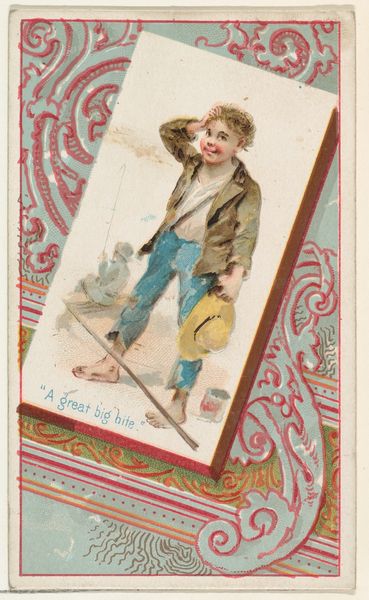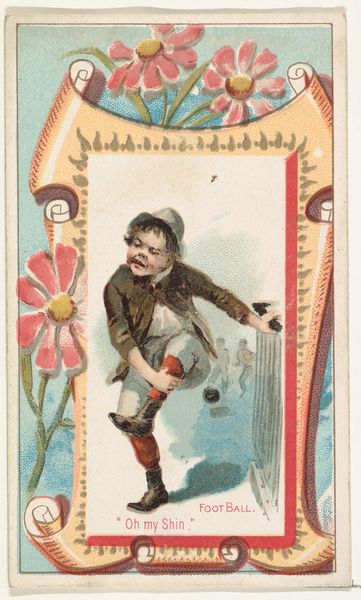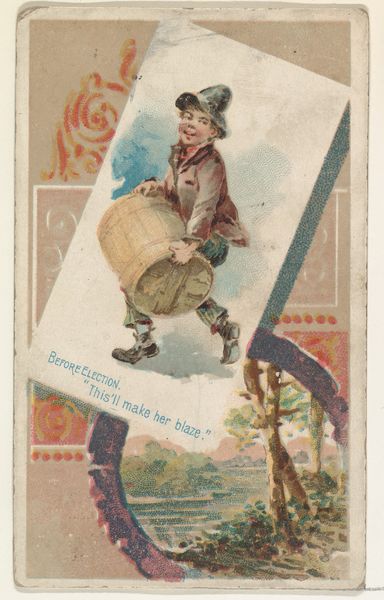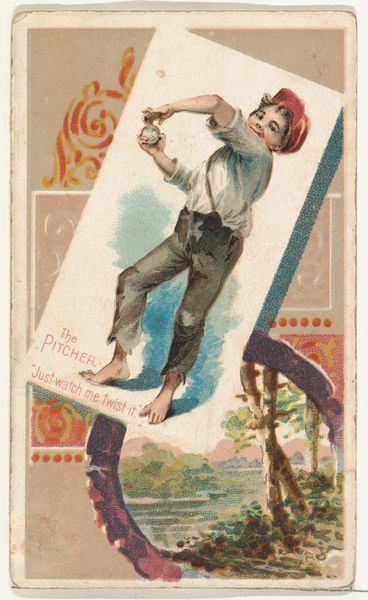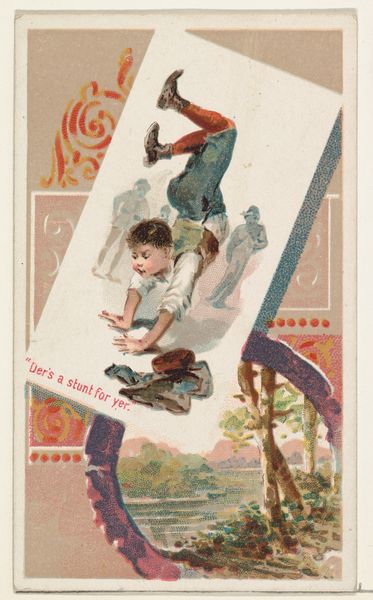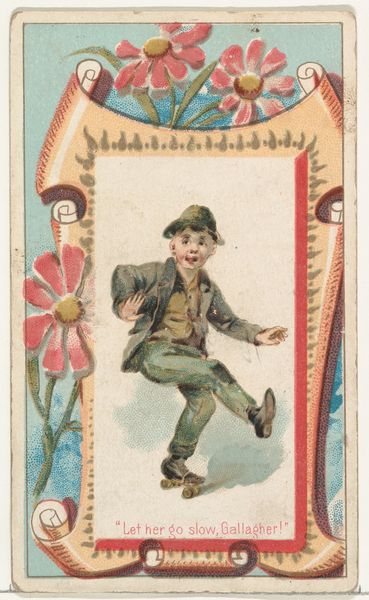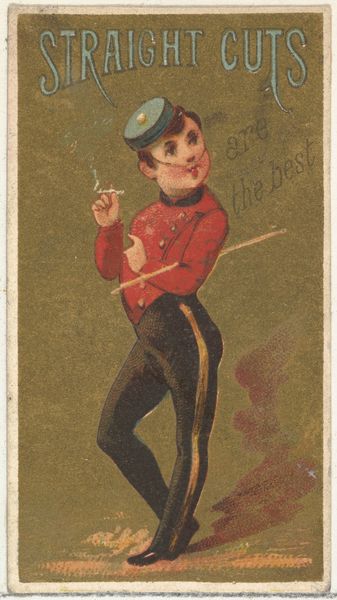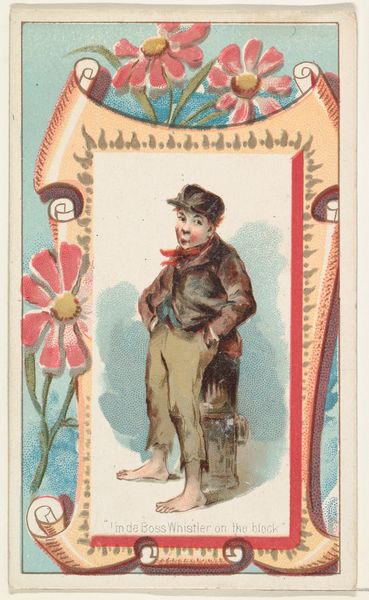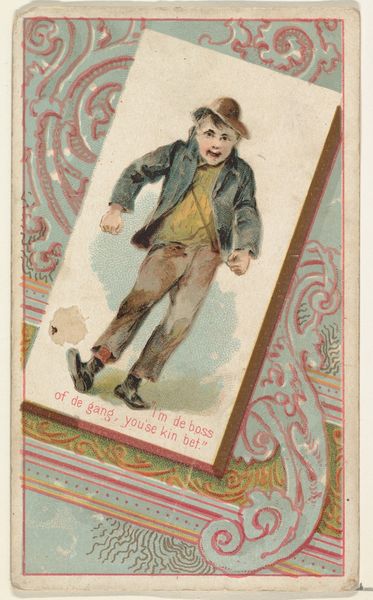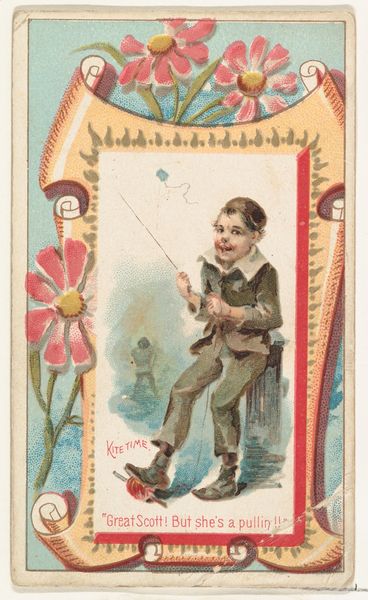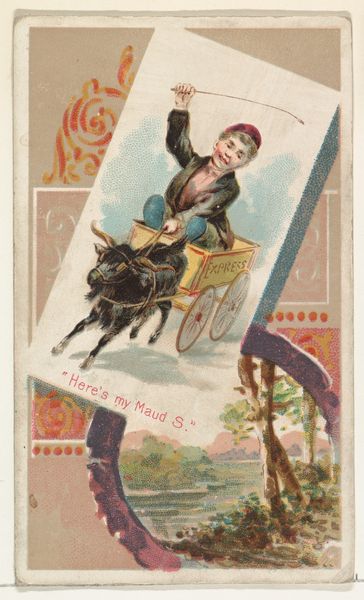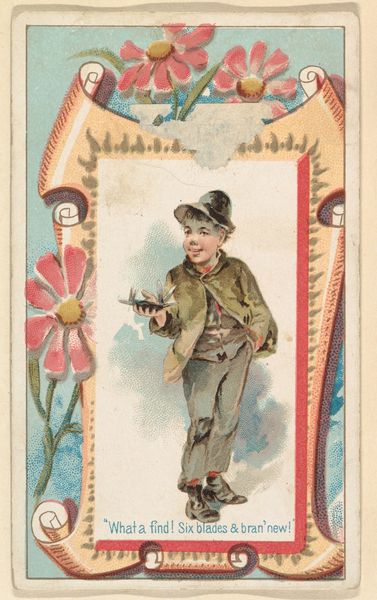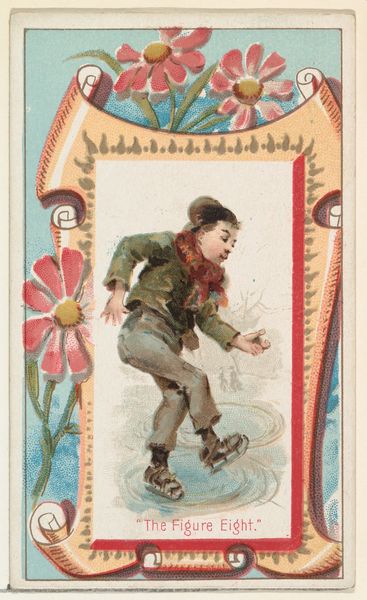
Caricatured Figure from the Girls and Children series (N64) promoting Virginia Brights Cigarettes for Allen & Ginter brand tobacco products 1886
0:00
0:00
Dimensions: Sheet: 2 5/8 × 1 1/2 in. (6.7 × 3.8 cm)
Copyright: Public Domain
Editor: This is "Caricatured Figure from the Girls and Children series (N64) promoting Virginia Brights Cigarettes," created around 1886 by Allen & Ginter. It's a small print, part of a series, I assume used in tobacco packaging. The caricature is, well, unsettling, given its racist depictions, yet its historical purpose fascinates me. What does it mean to view something like this today? Curator: That "unsettling" feeling is precisely the point. It's crucial to analyze these images through a historical lens, understanding their role in reinforcing racial hierarchies. These cards, mass-produced and distributed widely, helped normalize harmful stereotypes. The caricature wasn't just an innocent image; it was a tool of social and political power. Editor: So, by understanding its original context, we can see the image's purpose in shaping societal attitudes towards race? Curator: Exactly. Think about who collected these cards, who saw them, and what messages they were absorbing. These weren't viewed in the vacuum of an art gallery; they were circulated within a culture grappling with reconstruction and Jim Crow laws, embedding ideas of racial difference and social control. The Virginia Brights branding served not just as advertising, but social messaging. Editor: It makes me wonder about the collecting and displaying of such material in museum collections today. What are the implications of exhibiting potentially offensive works? Curator: That’s a very relevant question. Displaying such work prompts discussions about historical representation, and acknowledges the museum's role in grappling with difficult pasts. Are we re-traumatizing by showing these images? Or are we providing the historical and critical tools for viewers to understand the legacy of racism and how it continues to resonate today? It’s about fostering a critical awareness of our present and past. Editor: Thank you. This definitely offers a more critical lens on how to view pieces such as this and understand their implications.
Comments
No comments
Be the first to comment and join the conversation on the ultimate creative platform.
